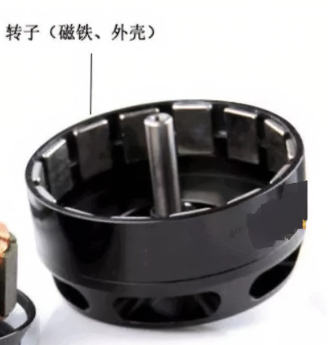What are the common control unit failures and solutions for brushless motor motor automatic rotor loading machine?
1, PLC failure
Failure phenomenon:
Program operation abnormality: there may be a wrong order of program execution, resulting in the various actions of the feeding machine can not be carried out in accordance with the intended process. For example, the loading action should be carried out first, and then the positioning operation, but when there is a program error, the order may be reversed or skipped some key steps, seriously affecting the normal work of the feeding machine.
Abnormal input and output signals: The input signals of PLC cannot be received correctly, or the output signals cannot control the external devices properly. For example, the signals from sensors can not be processed correctly after inputting into PLC, or the control signals from PLC can not drive motors, solenoid valves and other actuators, resulting in the failure of some functions of the feeding machine.
Solution:
First check the program logic of the PLC: Use programming software to check the PLC program to see if there is any logic error, and if there is any error, modify the program according to the normal workflow of the equipment. For complex programs, you can carry out step-by-step debugging, through online monitoring of program operation, to find out the steps and logic branches of the error, optimize the program.
Check the input and output modules: Confirm whether the input module receives signals normally and whether the output module outputs signals normally. Use a multimeter to check whether the signal voltage of the input and output modules is normal, if the module is damaged, the corresponding module should be replaced in time to ensure that it can work normally. At the same time, check the connection lines between the input and output modules and external equipment to prevent disconnection, short circuit or poor contact.

2, controller failure
Failure phenomenon:
Controller dead: during the operation of the equipment, the controller may suddenly stop responding, so that the whole loading machine stops working. This may be due to internal program conflicts, hardware failure or environmental factors (such as high temperature, electromagnetic interference, etc.).
Loss of control parameters: Some key control parameters stored in the controller, such as speed, position, time and other parameters are lost or modified, resulting in the feeding machine can not run according to the original set parameters, abnormal feeding speed, positioning inaccuracy and other problems.
Solution:
For the case of controller crash, first try to restart the controller. If it dies frequently, you need to check the working environment of the controller, such as temperature, humidity and electromagnetic environment, to ensure that it is within the appropriate range. If it is a hardware failure, you may need to contact the manufacturer for repair or replacement of the controller.
If the control parameters are missing, try to restore the parameters from a backup. It is a good precaution to back up the controller's parameters on a regular basis, and when there is a loss of parameters, import the backed up parameters into the controller. If there is no backup, you need to re-enter the parameters according to the original parameter settings of the device and debugging to ensure that the loading machine operates normally.
3, communication failure
Fault phenomenon:
Different control units can not communicate normally: for example, the communication between PLC and controller, controller and human-machine interface is interrupted, resulting in information can not be transmitted, so that the equipment can not be coordinated normally. The human-machine interface may not be able to display the operating status of the equipment, or may not be able to remotely control the equipment.
Communication data error: The transmitted data is garbled, lost, or incorrect, causing the equipment to receive incorrect commands, which in turn generates abnormal actions or stops operation.
Solution:
Check the communication line: check whether the communication cable is damaged, whether the plug is loose or has poor contact, and for shielded cable, check whether the shield is well grounded. Repair or replace damaged communication lines to ensure a firm connection.
Check the communication protocol settings: Make sure that the protocol settings of both sides of the communication are the same, including baud rate, data bits, stop bits, parity bits and other parameters, any one of which is set incorrectly may lead to communication failure. For the setting of communication protocol, you can refer to the operation manual of the equipment or consult the equipment manufacturer to ensure that the communication protocol is correct.
Eliminate electromagnetic interference: around the communication line, there may be strong sources of electromagnetic interference, the use of electromagnetic shielding cover, filters and other equipment to reduce the impact of electromagnetic interference on the communication, to ensure the stability of communication.
※ If through the above ways and means still can not solve the equipment failure, please contact Xinhui Electromechanical Equipment Co., Ltd. through the page chat tool to seek help.







